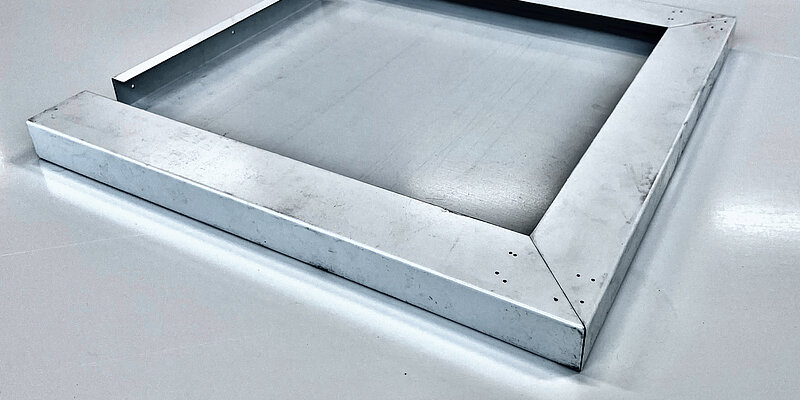If you’re in the manufacturing business, we’re likely not the first to mention tariffs, one of 2025’s top manufacturing trends. To put it simply, they’re on everyone’s minds, from business owners to employees to investors. The big question is, will these tariffs bring back manufacturing jobs here in the U.S.?
What we can confidently say tariffs mean for manufacturing businesses is that they may signal a shift towards automation. In this guide, we’ll break down the current state of the manufacturing industry, the potential effects of President Trump’s tariffs, and how your business can stay ahead.

The State of Manufacturing in 2025
The numbers for employment in manufacturing have not been great, especially over the last decade. Employment in the U.S. has shrunk by more than 0.5% on average over the past 10 years. This is largely due to a range of companies offshoring their labor. This trend could change as a result of tariffs, however. Johnson & Johnson recently announced plans to invest over $50 million in U.S.-based manufacturing, a major win for domestic production.
So, will tariffs fully bring back the manufacturing we miss? It’s hard to say. Where economists and industry experts worry is that the administration’s approach to tariffs has been anything but consistent. Many deals have been pushed back or quickly reworked, leaving manufacturing businesses in a tricky spot. And for potential employees hoping to see companies reshoring their manufacturing in 2025, the outlook also remains unclear.
Will Tariffs Bring Back Manufacturing? Analyzing the Potential Pros and Cons
Whether your fabrication business is in HVAC, data centers, roofing, or another industry, the tariffs will likely have several short- or long-term effects. In May and June alone, 14,000 manufacturing jobs were unfortunately lost here in the U.S. A rebound will come down to onshoring labor in the face of these potential roadblocks:
1. Upstream Cost Pressures
Tariffs on critical materials such as steel and aluminum, which recently rose to as high as 50%, will negatively impact any business’s raw material stage. Why is this? Higher input costs on everything from parts to tooling will likely rise, even if purchased domestically, due to global benchmarks increasing.
Manufacturers who rely on copper, aluminum, steel, and other materials can expect even their wholesale prices to rise, as added tariff costs are passed down the chain. This can limit ROI potential on many projects, making it difficult for companies to justify reshoring their manufacturing to the U.S. in 2025 and beyond.
2. Supply Chain Disruptions
The second roadblock for manufacturing returning to America in 2025 is potential disruptions to global supply chains. Country-specific tariffs, whether on China, Canada, the United Kingdom, or others, are likely to slow cross-border trade, leaving manufacturers scrambling to buy up what they can.
Take the HVAC industry, for example. With HVAC equipment prices likely to see a 15-30% increase in the near term, any parts partially or fully manufactured abroad will skyrocket in total cost. This may limit the amount of parts flowing into the U.S. Data centers, which often outsource specific cooling equipment or electrical housing, could also see delays due to tariffs.
So, will tariffs bring back manufacturing? It may come at a higher cost. It’s not all doom and gloom, however. For businesses across the U.S., President Trump’s tariffs may bring several benefits, including:
1. Support for American-Made Products
Companies that reshore their manufacturing to the U.S. may enjoy higher demand for their products, as consumers may be more inclined to buy from domestic companies. This could help protect and even open up new jobs for American workers in industries such as steel or automotive.
2. Increased Government Revenue
Another potential benefit of tariffs is added cash flow to contribute to the national budget. What does this mean for your manufacturing business? The hope is a noticeable boost to the domestic economy, which could drive consumer demand for manufactured goods across several key industries.
So, whether you choose to look at the potential cons or pros of tariffs, there is one way to set your business up for success in what is sure to be an unpredictable market.

Why Now Is the Perfect Time for Automation
When discussing whether tariffs will bring back manufacturing this year, it’s important to be transparent. Here are the final facts: The unemployment rate in the manufacturing industry increased to 4.2% by July. On top of this, Wells Fargo analysts say the U.S. will need to generate $2.9 trillion in investments to return to the employment level we saw in the peak of the 1970s and 80s. The bottom line? Your business needs to be prepared for all scenarios, including the potential benefits.
One way to do this is by automating the repetitive and time-consuming parts of your manufacturing process. This can help you become more competitive and solve potential labor shortages. Now, how can you accomplish this? By modernizing your existing machinery.
At RAS Systems, we’ve helped businesses like yours automate their process for over 30 years. Our selection of high-quality, German-engineered machines helps boost your team’s productivity and reduce the strain of manual labor. From their unmatched precision to flexibility, the advantages of our panel bending machines can help you stay ahead of tariffs in today’s market.
To learn more about our solutions, schedule a consultation today. Our experts will help find the right machine to fit your unique needs and goals.
FAQs
Will manufacturing return to America?
While long-term trends might not look the best, it remains unclear whether tariffs will bring back manufacturing to the U.S.
What companies are moving back to the U.S.?
While it highly varies by industry, some companies are reshoring manufacturing to the U.S. in 2025. We’ve seen the highest upward trends in the automotive industry.
Will tariffs bring back manufacturing?
The end goal of President Trump’s recent tariffs is to bring back the old days of American manufacturing. It remains unclear, however, whether jobs will quickly return to companies across the country.

Recent Comments